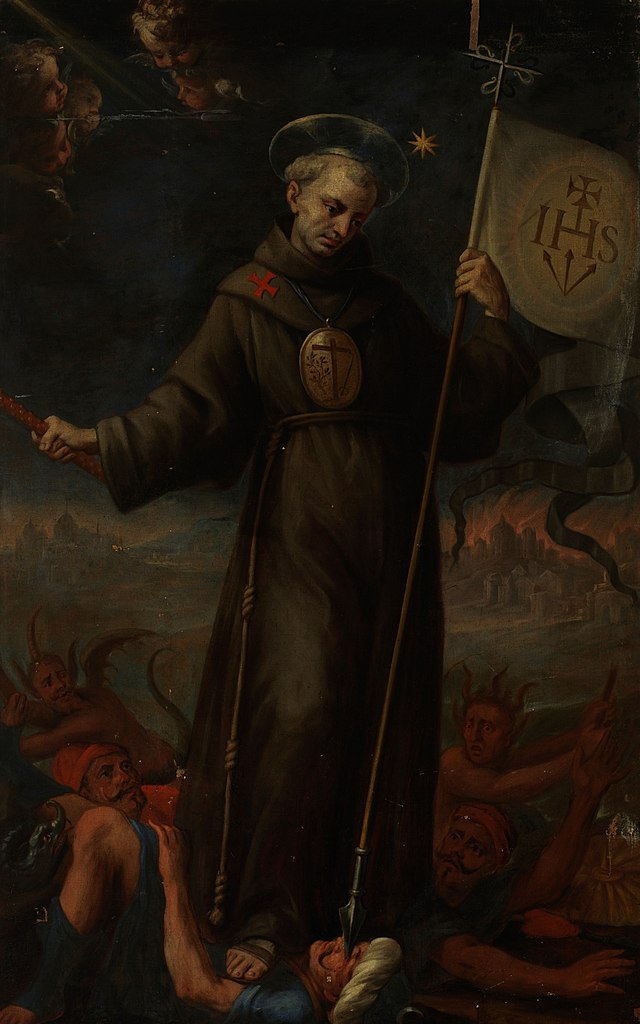
Against a dark, somewhat sinister backdrop, Alonso del Arco represents Saint Giovanni da Capestrano, or John of Capistrano (1386–1456). Born at Capistrano, near Naples in Italy, John was a friar, theologian, inquisitor, crusader and inciter of anti-Judaism. When the Turks captured Constantinople in 1453, John was commissioned to preach a crusade for the defence of Europe.
Del Arco represents him with traditional iconographic attributes: he is adorned in a brown Franciscan cassock with a red cross on it and stands beneath a shining star. In his left hand he holds a standard borne upon a pike with a cross like a pin-wheel at the top, suggesting Christ’s crucifixion via a cultish emprese. On the top is the IHS christogram referencing a frequent inscription in early Christian art. Though IHS can stand for “Iesus Hominem Salvator” (Jesus, Savior of Mankind), it is also often interpreted as “In hoc signo [crucis] vinces,” i.e., “In this sign of the cross you shall conquer”. This motto belonged to the dream of Constantine (the first Roman emperor to convert to Christianity, who established what became Constantinople). This reference would be particularly apt for del Arco’s call to arms, where rallying the military forces of Europe to repel the Turk could be boosted by appeal to the provident vision of Constantine.
Below John of Capistrano, del Arco depicts an Ottoman at his feet, who recalls his sermons against the Turks, which is likely to have contributed to their defeat at the battle of Belgrade in 1456. With the pike, he pierces the eye of the Ottoman, as if to affirm that all brutality is called for in defence of the faith.